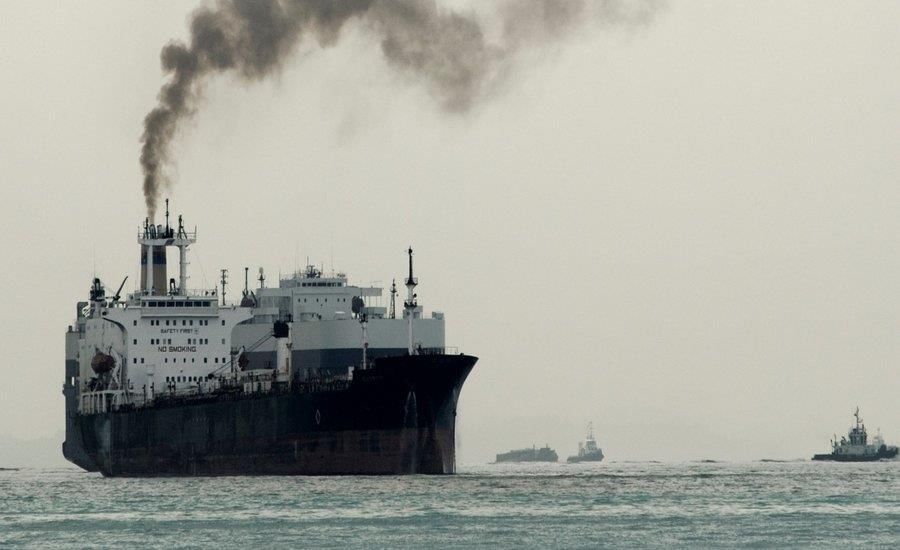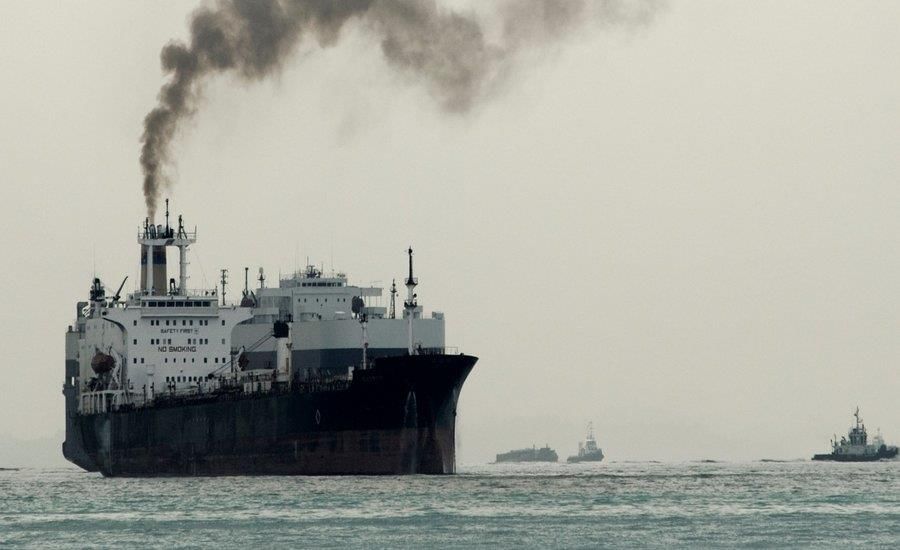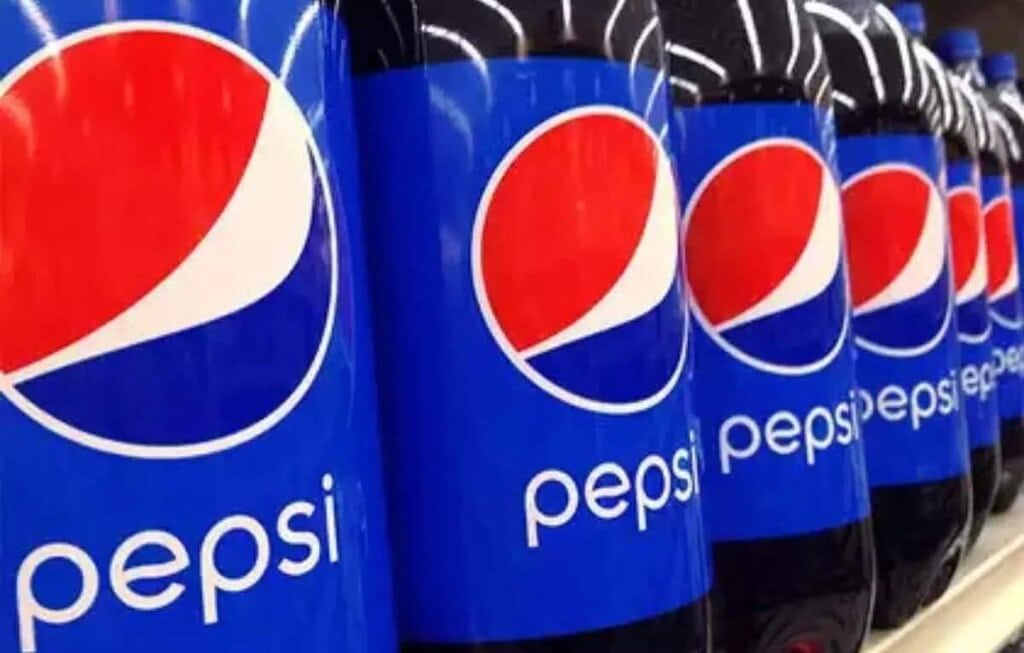UPSC Daily Current Affairs: 13th May 2025 | Current Affairs & Hindu Analysis: Daily, Weekly & Monthly PDF Download
GS3/Economy
Why Farmers Prefer Growing Rice and Wheat
Source: Indian Express
Why in News?
The preference of Indian farmers for rice and wheat can be attributed to a combination of guaranteed government support and advancements in agricultural technologies. These factors have led to the dominance of these crops, while alternatives fall behind due to insufficient incentives and innovations.
Key Takeaways
- Assured government procurement at Minimum Support Prices (MSP) reduces market risks for farmers.
- Rice and wheat are typically cultivated under irrigated conditions, leading to more stable yields.
- Ongoing breeding innovations have significantly improved productivity and resilience in these crops.
Additional Details
- Assured Procurement at MSP: The government guarantees the purchase of rice and wheat at MSP, which minimizes market risk. For instance, in Punjab, the area devoted to rice increased from 29.8 lakh hectares in 2015-16 to 32.4 lakh hectares in 2024-25 due to consistent MSP support.
- Lower Yield Risk: The cultivation of rice and wheat predominantly occurs under irrigation, benefiting from extensive public research. An example is the wheat variety HD-3385, released in 2023, which offers a yield of 6 tonnes per hectare and is resistant to various rust diseases.
- Continuous Breeding Innovations: Regular advancements in breeding have led to high-yielding and stress-resistant varieties. For example, the genetically edited rice variety Kamala yields up to 9 tonnes per hectare, maturing faster and reducing water and fertilizer costs.
In conclusion, the combination of assured government policies, effective research support, and continuous innovations in breeding has made rice and wheat the preferred crops for Indian farmers. This trend is likely to persist unless there are significant changes in support for other crops.
GS3/Environment
Microbial Phosphorus Gatekeeping
Source: Nature
 Why in News?
Why in News?
A recent study published in Nature Geoscience highlights the critical role that soil microbes play in the cycling of phosphorus over a span of 700,000 years in the Cooloola coastal dune system, located in Cooloola National Park, Queensland, Australia.
Key Takeaways
- Phosphorus is an essential macronutrient necessary for all forms of life.
- Soil microbes, particularly fungi and bacteria, act as 'phosphorus gatekeepers'.
- This microbial activity significantly influences phosphorus availability for plants.
Additional Details
- Importance of Phosphorus:Phosphorus (P) is crucial for various biological processes, including:
- Energy metabolism (e.g., ATP production)
- Cell membrane synthesis (phospholipids)
- Photosynthesis and genetic functions (DNA/RNA)
- Microbial Phosphorus Gatekeeping:Soil microbes utilize several adaptive mechanisms to cope with phosphorus scarcity, such as:
- Replacing membrane phospholipids with non-phosphorus lipids
- Accumulating microbial lipids (fats) to minimize phosphorus requirements
- Optimizing the efficiency of phosphorus use in their metabolism
- This interplay creates a balance of competition and facilitation between microbes and plants, wherein microbes recycle phosphorus and enhance its accessibility over time.
This study underscores the dynamic role of microbial communities in managing phosphorus availability, which is vital for maintaining ecosystem health and productivity.
GS3/Environment
India’s Rising E-Waste: The Need to Recast Its Management
Source: The Hindu
 Why in News?
Why in News?
India has revamped its e-waste governance through the E-Waste (Management) Rules, 2022, which were implemented on April 1, 2023, replacing the previous version from 2016. This significant policy shift aims to address the escalating e-waste crisis in the country.
Key Takeaways
- Mandatory registration for all manufacturers, producers, refurbishers, and recyclers with the Central Pollution Control Board (CPCB).
- Specific collection and recycling targets set by the CPCB for these entities.
- Non-compliance results in environmental compensation and penalties.
Additional Details
- EPR Floor Pricing: This mechanism ensures fair returns to formal recyclers, making recycling economically viable and reducing reliance on unsafe informal practices. For example, certified recyclers using advanced technologies are assured stable earnings, which encourages compliance and growth.
- Reduction of Informal Sector Dominance: EPR floor pricing helps transition e-waste processing from informal channels to the formal sector, where safety and environmental standards are upheld. Currently, about 95% of e-waste is processed informally in India.
- Boosting Circular Economy: Stable pricing incentivizes recyclers to focus on resource recovery, such as precious metals, rather than mere disposal. For instance, proper recycling of circuit boards can recover metals worth crores, decreasing the need for raw material imports.
The economic and social consequences of inadequate e-waste management are dire. India suffers an annual economic loss of over $10 billion from pollution due to toxic e-waste processing. Moreover, informal processing leads to a $20 billion social loss, disproportionately affecting women and children, who have an average lifespan of under 27 years.
Health Impacts
Open incineration and the use of hazardous chemicals like cyanide and sulphuric acid contribute to severe air, water, and soil pollution, exacerbating public health crises.
How Stable Pricing Supports Formal Recycling
- Ensures financial viability for formal recyclers by offering a minimum price for EPR certificates, promoting investment in safe technologies.
- Discourages hazardous informal practices by eliminating the cost advantage held by the informal sector, leading to safer recycling methods.
- Drives compliance and investment as predictable prices foster trust, aiding producers in meeting EPR obligations.
Challenges
- Dominance of the Informal Sector: A significant portion of e-waste is processed informally using unsafe methods, posing health risks to workers.
- Low Consumer Awareness: Many consumers lack knowledge about proper e-waste disposal, often leading to improper practices such as hoarding or selling to unregulated recyclers.
Way Forward
- Strengthen Awareness: Initiate consumer education campaigns about e-waste disposal to ensure proper recycling practices are adopted.
- Enhance Infrastructure: Develop advanced recycling infrastructure and enforce EPR compliance to ensure producers meet their recycling targets.
India’s growing e-waste issue is intrinsically linked to its rapid digital transformation and increased use of electronic devices. Addressing this challenge is critical for sustainable economic growth and environmental protection.
GS3/Environment
India’s Role in Global Shipping Emission Reforms: A Turning Point
Source: Economic Times
 Why in News?
Why in News?
Recently, the 83rd session of the International Maritime Organization’s Marine Environment Protection Committee convened at IMO Headquarters in London, marking a significant movement towards climate action in the shipping industry.
Key Takeaways
- The IMO is progressing towards a Market-Based Measure (MBM) framework aimed at reducing global shipping emissions.
- India, along with Singapore, has been instrumental in developing a consensus during the MEPC-83 session.
- The shipping sector contributes nearly 2.8% of global greenhouse gas emissions, ranking as the sixth-largest emitter if considered a country.
Additional Details
- Evolution of the Emissions Framework:At MEPC-83, five proposals were introduced to address emissions:
- International Chamber of Shipping: Proposed a fixed levy per tonne of CO₂ emitted.
- China: Suggested a market-driven approach for trading compliance units.
- European Union: Advocated for a fixed GHG levy managed by an IMO-administered fund.
- Bridging Mechanism: Proposed penalties for under-compliant ships and rewards for those using Zero or Near-Zero (ZNZ) fuels.
- India’s Model: Suggested a GHG Fuel Standard (GFS) with tiered incentives.
- Ultimately, Singapore’s hybrid model, inspired by India, was approved with a vote of 63-16, pending final ratification under the MARPOL convention’s Annex VI amendment process.
The discussions highlighted geopolitical divides, with oil-exporting nations opposing substantial reforms and small island nations advocating for steep carbon levies to support green development. Despite varying interests, the adoption of the MBM framework represents a significant precedent in global shipping regulations.
Importance of Green Transition in Shipping
- The shipping industry, while often overlooked by consumers, is a major global emissions contributor, with potential increases of 50% to 250% by 2050 if reforms are not enacted.
- The IMO has introduced measures such as:
- Energy Efficiency Design Index (EEDI)
- Ship Energy Efficiency Management Plan (SEEMP)
- Mandatory Fuel Oil Consumption Reporting
- By 2030, the IMO aims for a 40% reduction in carbon intensity compared to 2008 levels, targeting net-zero emissions by 2050.
While the new emission levies may marginally increase India’s maritime logistics costs (up to 7.29% on imports and 8.09% on exports by 2030), the long-term benefits are anticipated to outweigh these initial challenges.
Opportunities for India
- India’s coastal fleet remains unaffected as MBMs apply only to international shipping.
- The projected rise in fuel costs for India's international fleet is manageable, estimated at an additional $108 million by 2030.
- India aims to lead in green hydrogen exports through its National Hydrogen Mission, with significant investments from companies like Reliance and Adani.
- The IMO’s framework aligns with India’s clean fuel targets, opening lucrative export markets for Indian green hydrogen.
In conclusion, the adoption of the MBM framework signifies a pivotal moment for the shipping industry, addressing critical climate change issues while unlocking extensive economic opportunities for India in the green energy sector. If fully implemented, this initiative could establish global shipping as the first regulated sector under binding climate goals, setting a precedent for others to follow.
GS3/Environment
Species in News: Indian Grey Wolf
Source: The Hindu
Why in News?
The Indian Grey Wolves residing in the Kadbanwadi Grasslands of Pune District face significant threats from local dog populations, which may transmit diseases such as Canine Distemper Virus (CDV), rabies, and canine parvovirus.
Key Takeaways
- The Indian Grey Wolf is a subspecies of the Grey Wolf, primarily found in India, Southwest Asia, and parts of the Middle East.
- This wolf has a distinctive brownish-grey coat with black and white markings.
- Indian Grey Wolves are less vocal and typically live in small packs of 2 to 6 members.
- Being nocturnal, they primarily hunt at night and prey on small animals like chinkaras (gazelles), rodents, and occasionally livestock.
- They inhabit scrublands, grasslands, and semi-arid regions, favoring warm climates.
- As apex predators, they play a crucial role in controlling herbivore populations and maintaining ecosystem balance.
- Threats to their survival include habitat loss, diseases from stray dogs, crossbreeding, and human conflicts.
Additional Details
- Conservation Status: The Indian Grey Wolf is classified as Endangered by the IUCN and is included in CITES Appendix I for the highest level of international protection. It also receives maximum legal protection under the Wildlife Protection Act, 1972, Schedule I.
- The only designated protected area for Indian Grey Wolves in India is the Mahuadanr Wolf Sanctuary, located in the Latehar district of Jharkhand, established in 1976 as part of the Palamau Tiger Reserve.
In conclusion, the Indian Grey Wolf is facing numerous challenges that jeopardize its survival. Conservation efforts are essential to ensure the protection of this unique subspecies and its habitat.
GS3/Environment
International Maritime Organisation (IMO)
Source: PIB
Why in News?
The 83rd session of the Marine Environment Protection Committee (MEPC-83) under the International Maritime Organisation (IMO) has adopted a significant decision aimed at addressing shipping emissions.
Key Takeaways
- The IMO is a specialized agency of the United Nations focused on the safety and security of international shipping.
- It plays a crucial role in preventing marine and atmospheric pollution by ships and contributes to the UN Sustainable Development Goal (SDG) 14 concerning ocean conservation.
Additional Details
- IMO’s Role: The IMO formulates regulations for shipping safety, maritime security, and environmental protection, but does not enforce them. Once adopted by a member state, these regulations become part of that country's domestic law.
- Legal Matters: The organization also addresses legal issues such as liability, compensation, and the facilitation of maritime traffic.
- The IMO was established in 1948 as the Inter-Governmental Maritime Consultative Organization (IMCO), became a UN specialized agency in 1959, and was renamed to IMO in 1982. It currently has 174 member states and is headquartered in London.
The IMO is governed by an Assembly that meets every two years to approve work programs and budgets. Its executive organ oversees activities between Assembly sessions, supported by five major committees, including the Marine Environment Protection Committee (MEPC). Funding comes from mandatory contributions by member states, along with voluntary donations and commercial revenue.
MARPOL Convention
- MARPOL: The International Convention for the Prevention of Pollution from Ships is the primary treaty adopted in 1973 under the IMO to prevent marine pollution from ships due to operational or accidental causes. It was supplemented by the 1978 Protocol following significant tanker accidents.
- MARPOL consists of six technical annexes addressing various pollution sources from ships, including:
- Annex I: Oil pollution (e.g., spills and bilge water discharge).
- Annex II: Noxious liquid substances in bulk (e.g., chemical tankers).
- Annex III: Harmful substances in packaged form (e.g., dangerous goods).
- Annex IV: Sewage discharge from ships.
- Annex V: Garbage disposal at sea.
- Annex VI: Air pollution from ships (e.g., sulfur oxides, nitrogen oxides).
- India is a signatory to MARPOL and adheres to its annexes through domestic regulations.
This landmark decision by the IMO showcases a commitment to improving environmental standards in the shipping industry and addressing the urgent issue of emissions.
GS2/International Relations
Group of Friends of Traditional Medicine (GFTM)
Source: MSN
 Why in News?
Why in News?
The Sixth Meeting of the Group of Friends of Traditional Medicine (GFTM) was recently hosted by the Permanent Mission of India in Geneva, highlighting the ongoing global discussions surrounding traditional medicine.
Key Takeaways
- The GFTM is an informal platform established in May 2023 under the auspices of the WHO.
- It aims to foster cooperation and integration of traditional medicine into global health strategies.
- India plays a crucial role in coordinating these efforts through its Permanent Mission.
Additional Details
- Purpose of GFTM: The GFTM promotes global collaboration on traditional medicine, supporting initiatives like the WHO Traditional Medicine Strategy 2025–2034, which emphasizes knowledge exchange and research collaboration.
- Focus Areas: The GFTM aims to enhance policy development, capacity building, and scientific validation of traditional practices.
- The platform also builds momentum for significant global events, including the WHO Global Traditional Medicine Summit and sessions of the World Health Assembly.
India’s Key Initiatives in Traditional Medicine:
- National AYUSH Mission (NAM): This initiative promotes various traditional systems of medicine, including Ayurveda, Yoga, Naturopathy, Unani, Siddha, and Homeopathy through dedicated facilities and educational programs.
- Establishment of Wellness Centres: Ayush Arogya Mandirs are being set up for integrated care.
- Insurance Coverage: Expansion of insurance policies to include AYUSH treatments.
- Collaborative Research: Promoting research partnerships with organizations like DBT, DST, ICMR, and CSIR.
- Technological Integration: Utilizing AI, genomics, and bioinformatics to enhance the scientific credibility of traditional medicine.
- Global Outreach: Strengthening international relationships through bilateral agreements and participation in international events and multilateral platforms.
How is the Government of India protecting traditional knowledge of medicine from patenting by pharmaceutical companies?
The Indian government is actively working to safeguard traditional medical knowledge from potential patenting by pharmaceutical companies, ensuring the protection of indigenous practices and knowledge.
GS2/Governance
The Educational Landscape, Its Disconcerting Shift
Source: The Hindu
 Why in News?
Why in News?
The current state of higher education, particularly in India but reflecting global trends, indicates a troubling shift away from the foundational principles of academic freedom and intellectual independence.
Key Takeaways
- Universities are increasingly losing autonomy due to bureaucratic control and market pressures.
- The shift from intellectual independence to centralization undermines academic discourse and diversity.
- Corporatisation of education prioritizes profitability over intellectual exploration.
Additional Details
- Centralization: Universities once enjoyed significant autonomy but are now subjected to the control of bodies like the University Grants Commission (UGC) and regulations such as the National Education Policy (NEP). This has led to a loss of self-governance.
- Consequences of Centralization: The erosion of academic freedom results in compliance among faculty and students, stifling creativity and innovation in academic discourse.
- Ideological Intolerance: Universities have become environments where dissenting voices are suppressed, leading to self-censorship among scholars and a shrinking space for critical debate.
- Corporatisation: Higher education institutions are increasingly viewed as businesses, with success measured by profitability rather than intellectual contributions, marginalizing disciplines like the arts and humanities.
- Crisis in Governance: The infusion of corporate values into academic governance diminishes the focus on educational ideals, as administrators prioritize efficiency over scholarly engagement.
To counter these trends, universities must reaffirm their commitment to academic freedom, intellectual diversity, and ethical leadership. By restoring autonomy and fostering an environment for dissent, they can reclaim their role as catalysts for societal progress and democratic renewal.
GS3/Environment
How is the Shipping Industry Tackling Emissions?
Source: The Hindu
 Why in News?
Why in News?
The International Maritime Organization (IMO) has recently made significant strides in regulating greenhouse gas emissions from the shipping industry, particularly during the Marine Environment Protection Committee (MEPC-83) session. The adoption of a new framework aims to cut shipping emissions, marking a pivotal moment in global climate governance.
Key Takeaways
- The shipping industry accounts for approximately 1 billion metric tonnes of greenhouse gas emissions annually, representing about 2.8% of total global emissions.
- The IMO has set ambitious targets to reduce carbon intensity: 40% by 2030, 70% by 2040, and achieving net-zero emissions by 2050.
Additional Details
- International Maritime Organization (IMO): A specialized agency of the United Nations responsible for regulating international shipping, ensuring maritime safety, and promoting environmental protection.
- Net Zero Framework: This framework introduces a mandatory emissions levy on global shipping to meet net-zero targets by 2050. Ships using low-emission fuels can earn financial incentives, while those with higher emissions will incur costs.
- Challenges Faced: Resistance from oil-exporting nations and differing priorities between developed and developing countries complicate the implementation of stringent emission regulations.
- Technological Innovations: The IMO encourages the adoption of green technologies and alternative fuels, such as green hydrogen, to facilitate the transition to cleaner shipping.
The shipping industry is at a crossroads, where balancing economic interests with environmental responsibilities is critical. With the implementation of the Net Zero Framework and the establishment of clear emission targets, the industry is poised for a transformative shift towards sustainability.
GS3/Science and Technology
Axions and HAYSTAC Experiment
Source: Frontiners
 Why in News?
Why in News?
The recent results of the HAYSTAC experiment, published in Physical Review Letters, represent a significant technological advancement in the search for axions, despite the absence of detected axions. This experiment has substantially broadened the parameter space concerning axion mass and coupling strength.
Key Takeaways
- HAYSTAC aims to directly detect axions, which are potential constituents of dark matter.
- The experiment utilizes advanced techniques to enhance sensitivity in detecting weak signals.
Additional Details
- What are Axions?Axions are hypothetical subatomic particles that were first proposed in the late 1970s to solve the strong CP problem in quantum chromodynamics (QCD). They are now considered promising candidates for dark matter due to their unique properties, including:
- Electromagnetically neutral
- Extremely light
- Very weakly interacting with ordinary matter and radiation
- Axions are thought to comprise Cold Dark Matter (CDM), which constitutes approximately 85% of the universe’s matter content.
- Pioneering theorists, including Sikivie, Wilczek, Dine, and Preskill, demonstrated that axions could be produced in sufficient quantities in the early universe to explain the observed dark matter density.
- What is HAYSTAC? The HAYSTAC (Haloscope At Yale Sensitive To Axion Cold Dark Matter) experiment is a collaborative effort involving Yale, Berkeley, and Johns Hopkins universities. Its mission is to directly detect axions by leveraging their ability to convert into photons within a strong magnetic field.
- The experiment employs a haloscope, a specialized detector designed by Pierre Sikivie, which includes a microwave cavity situated in a powerful magnetic field.
- In its Phase II, HAYSTAC executed the most extensive frequency search for dark matter axions to date, introducing quantum squeezing techniques to minimize quantum noise, thereby improving the sensitivity of its haloscope detector.
- Currently, HAYSTAC and Advanced LIGO are the only major physics experiments utilizing quantum squeezing to enhance measurement precision.
- Quantum squeezing involves manipulating uncertainties in quantum states to reduce random fluctuations, which significantly enhances the signal-to-noise ratio in detecting rare particles like axions.
Overall, the HAYSTAC experiment represents a critical step in the ongoing quest to understand dark matter and the fundamental components of our universe.
GS1/History & Culture
Buddhavanam and the Miss World 2025 Contestants' Visit
Source: The Hindu
 Why in News?
Why in News?
The contestants of Miss World 2025 from 22 countries recently visited Buddhavanam on the occasion of Buddha Purnima, highlighting the significance of the site in promoting Buddhist culture and heritage.
Key Takeaways
- Buddhavaman is a Buddhist theme park located on the northern bank of the Krishna River in Telangana.
- The project aims to develop an integrated Buddhist Circuit to attract tourists, especially from Southeast Asia.
Additional Details
- Buddhavanam: Spanning 279 acres, it showcases the life and teachings of Gautama Buddha through various attractions.
- Features: The park includes the Entrance Plaza, Buddhacharitha Vanam (Life of Buddha), Jataka Park (depicting stories from Buddha’s previous lives), Dhyana Vanam for meditation, and Stupa Vanam, which houses the impressive Maha Stupa.
- Maha Stupa: Notable for its intricate carvings and a virtual hanging sky adorned with lotus petals.
- Historical Significance: Located near Nagarjuna Sagar, the site has ties to the Ikshvaku dynasty and is known for its Mahayana Buddhism heritage.
- Excavations: Conducted between 1954 and 1960 at Nagarjunakonda revealed structures like the Maha Stupa, votive stupas, chaityas, and numerous Buddhist sculptures representing significant events in Buddha’s life.
Buddhavanam serves as a vital cultural and historical site, drawing attention to Buddhism's rich heritage and aiming to enhance tourism in the region.
GS2/Governance
National Company Law Appellate Tribunal (NCLAT) Dismisses Insolvency Petition Against PepsiCo India
Source: The Hindu
 Why in News?
Why in News?
The National Company Law Appellate Tribunal (NCLAT) recently dismissed an insolvency petition filed by SNJ Synthetics against PepsiCo India Holdings. The tribunal asserted that the Insolvency and Bankruptcy Code (IBC) should not be utilized for debt recovery in cases where only disputed interest claims are present.
Key Takeaways
- The NCLAT ruled that the IBC cannot serve as a means for recovering disputed debts.
- This decision emphasizes the need for clarity in instances involving interest claims.
Additional Details
- National Company Law Appellate Tribunal (NCLAT): A quasi-judicial body established under Section 410 of the Companies Act, 2013, to hear appeals against decisions made by the National Company Law Tribunal (NCLT) since June 1, 2016.
- Main Objectives: To promote timely resolution of corporate disputes, enhance transparency, and improve the efficiency of insolvency and corporate governance processes.
- Functions:
- Hearing appeals under Section 61 of the IBC.
- Hearing appeals against orders from the Insolvency and Bankruptcy Board of India (IBBI) as per Sections 202 and 211 of the IBC.
- Addressing appeals related to the Competition Commission of India (CCI).
- Hearing appeals concerning the National Financial Reporting Authority (NFRA).
- Providing advisory opinions on legal issues referred by the President of India.
- Headquarters: Located in New Delhi.
- Composition: The tribunal consists of a Chairperson and Judicial and Technical Members, all appointed by the Central Government based on expertise in law, finance, accountancy, and administration.
- Powers and Procedure:
- NCLAT can regulate its own procedures and has powers equivalent to a civil court under the Civil Procedure Code, 1908.
- It can summon witnesses, receive affidavits, enforce document production, and issue commissions.
- Orders from the NCLAT are enforceable like civil court decrees.
- Appeals against NCLAT decisions can be made to the Supreme Court of India.
- Civil courts do not have jurisdiction over matters under the NCLAT's purview.
- No court or authority can issue injunctions against actions taken by NCLAT.
- NCLAT is mandated to dispose of appeals within six months from receipt to ensure swift resolution.
This ruling by the NCLAT reinforces the principles of the Insolvency and Bankruptcy Code, particularly in differentiating between recoverable debts and disputed claims, thereby clarifying the tribunal's jurisdiction and operational boundaries.
|
43 videos|5366 docs|1135 tests
|
FAQs on UPSC Daily Current Affairs: 13th May 2025 - Current Affairs & Hindu Analysis: Daily, Weekly & Monthly
| 1. Why do farmers in India prefer growing rice and wheat over other crops? |  |
| 2. What is microbial phosphorus gatekeeping, and why is it important? |  |
| 3. What are the main challenges associated with India's rising e-waste? |  |
| 4. How is India contributing to global shipping emission reforms? |  |
| 5. What is the significance of the Group of Friends of Traditional Medicine (GFTM)? |  |
















